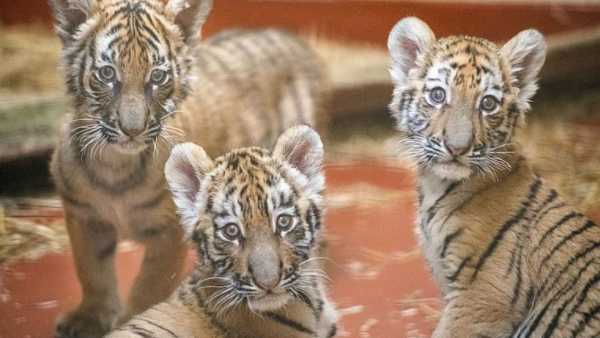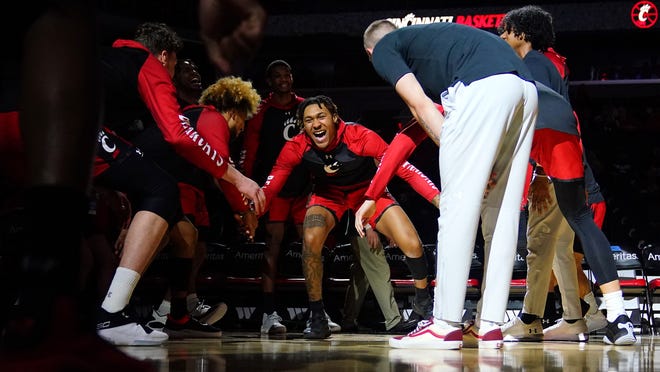

Three tiger cubs now make up an unlikely family at the Cleveland Metroparks Zoo.Each neglected by their mothers at birth, the trio has formed their own little social group – being hand-raised by their human caretakers.The new social group now consists of two subspecies of tigers — one Malayan tiger and two Amur tigers.The Malayan tiger cub, a 2-month-old named Indrah, recently arrived in Cleveland from Tulsa, Oklahoma.Zoo officials say Indrah was moved to Cleveland after her mother at the Tulsa Zoo did not demonstrate maternal bonding to support her cub. Officials with the Tiger Species Survival Plan Program said they made the decision to send Indrah to Ohio where she would join the two Amur tiger cubs who are in the same situation.The two Amur cubs – a male and a female who have not yet been named – were born in Cleveland in late December. The pair are the first tigers born in Cleveland in 20 years.First-time mother Zoya displayed minimal signs of maternal care, zoo officials said, requiring the cubs to be raised separately with the help of zoo veterinary and husbandry care experts.Socialization of tigers at an early age is incredibly important and raising these cubs as part of a unique social group will allow them to develop skills and behaviors together,” said Dr. Chris Kuhar with Cleveland Metroparks Zoo.“The decision to hand-rear cubs, and to transfer a cub, is never taken lightly," Joe Barkowski, Tulsa Zoo's vice president of animal conservation and science, previously said in a statement. "In this case, it was clear the move was the best decision to ensure our cub would have an opportunity to benefit from being part of a social group. The transition also allows our zoo to continue to focus on our SSP breeding recommendation for our Malayan tigers in 2021, to ensure their sustainable populations in AZA-accredited facilities.”Once the three are a few months old, having gained adequate strength and fitness, they will make their home together at the Zoo’s Rosebrough Tiger Passage.The trio made their public debut on Wednesday.Adult Amur tigers are the largest tigers among the different subspecies and are also the most tolerant to the cold, as their native range includes the far eastern side of Russia and northeastern China. Malayan tigers are a smaller subspecies of tigers found natively on the Malaysian peninsula and the southern tip of Thailand.
Three tiger cubs now make up an unlikely family at the Cleveland Metroparks Zoo.
Each neglected by their mothers at birth, the trio has formed their own little social group – being hand-raised by their human caretakers.
The new social group now consists of two subspecies of tigers — one Malayan tiger and two Amur tigers.
The Malayan tiger cub, a 2-month-old named Indrah, recently arrived in Cleveland from Tulsa, Oklahoma.
Zoo officials say Indrah was moved to Cleveland after her mother at the Tulsa Zoo did not demonstrate maternal bonding to support her cub. Officials with the Tiger Species Survival Plan Program said they made the decision to send Indrah to Ohio where she would join the two Amur tiger cubs who are in the same situation.
The two Amur cubs – a male and a female who have not yet been named – were born in Cleveland in late December. The pair are the first tigers born in Cleveland in 20 years.
First-time mother Zoya displayed minimal signs of maternal care, zoo officials said, requiring the cubs to be raised separately with the help of zoo veterinary and husbandry care experts.
Socialization of tigers at an early age is incredibly important and raising these cubs as part of a unique social group will allow them to develop skills and behaviors together,” said Dr. Chris Kuhar with Cleveland Metroparks Zoo.
“The decision to hand-rear cubs, and to transfer a cub, is never taken lightly," Joe Barkowski, Tulsa Zoo's vice president of animal conservation and science, previously said in a statement. "In this case, it was clear the move was the best decision to ensure our cub would have an opportunity to benefit from being part of a social group. The transition also allows our zoo to continue to focus on our SSP breeding recommendation for our Malayan tigers in 2021, to ensure their sustainable populations in AZA-accredited facilities.”
Once the three are a few months old, having gained adequate strength and fitness, they will make their home together at the Zoo’s Rosebrough Tiger Passage.
The trio made their public debut on Wednesday.
Adult Amur tigers are the largest tigers among the different subspecies and are also the most tolerant to the cold, as their native range includes the far eastern side of Russia and northeastern China. Malayan tigers are a smaller subspecies of tigers found natively on the Malaysian peninsula and the southern tip of Thailand.
Source link









